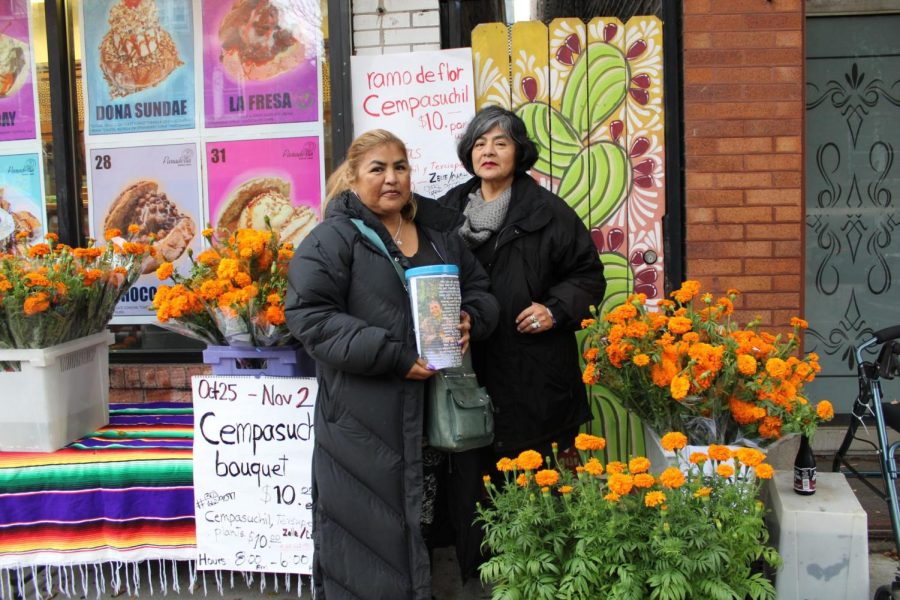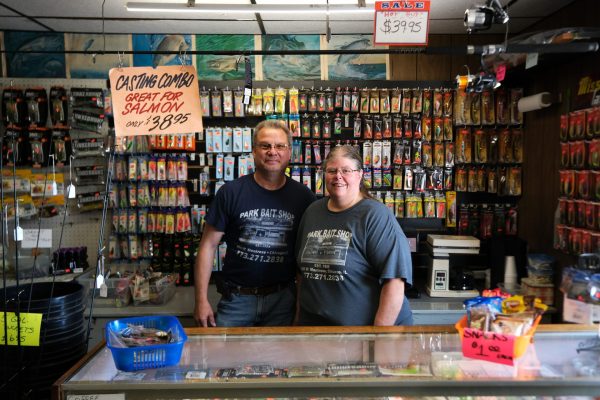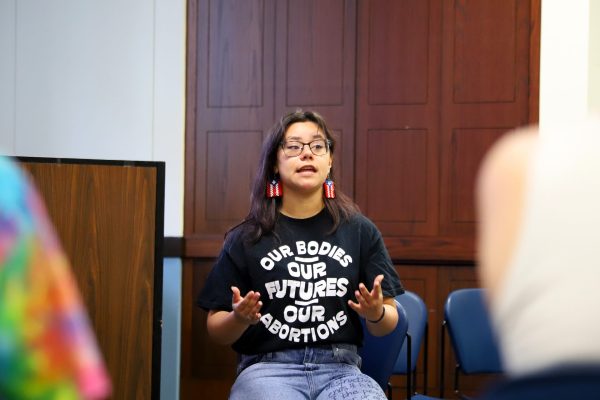The Cempasúchil flowers unite Chicagoans with their deceased loved ones
Stephania Rodriguez for The DePaulia
Rocio Olea (left) and Maria Guadalupe Olea (right) stand in front of Panaderia Nuevo Leon in Pilsen selling cempasúchil flowers.
Living in the Mexican state of Guanajuato, Ubertino Soto rented land to build a farm and harvest cempasúchil flowers to sell to a company as animal feed. For three months, Soto harvested cempasúchil flowers, and every week took them to the city of Celaya, Guanajuato to deliver them. He would not receive any payment until the end of the harvest season.
One day, when he was returning home after receiving his salary, Soto was involved in a car accident and died.
Several years after his death, Juliana Soto, the granddaughter he never knew, and a student at DePaul, remembers him and tells the story of his death to her fellow members of the DePaul Tepeyac group.
“It is strange that he was harvesting and selling cempasúchil flowers, and that he died shortly after,” Juliana Soto said.
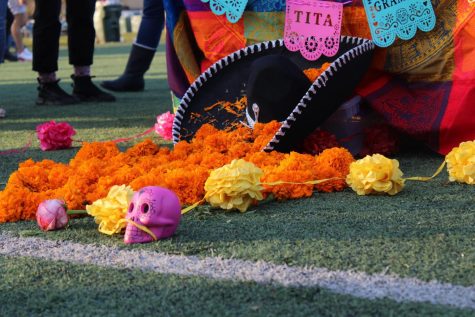
Despite being one of the most popular celebrations in Mexico, Juliana Soto, like many other first-generation Mexican-Americans, grew up with little knowledge of Día de los Muertos, or Day of the Dead. She did not know the meaning of the cempasúchil flower tradition in relation to the offerings.
Cempasúchil flowers are native to Mexico. Their name comes from the Nahuatl “Cempoalxochitl” which means “twenty flowers” or “several flowers,” according to the Government of Mexico.
The relationship of cempasúchil flowers with the Day of the Dead began with The Legend of the cempasúchil Flower. The legend tells the love story of a pair of young Aztecs, Huitzilin and Xochitl, who existed long ago, grew up together in childhood and later fell in love.
After Huitzilin’s death in battle, Xochitl asked the sun god, Tonatiuh, to unite her with her beloved in eternity. Tonatiuh granted her wish and turned her into a cempasúchil flower.
Huitzilin later turned into a hummingbird and perched in the center of the flower, and thus he and Xochitl were reunited.
On the Day of the Dead, tradition says that the aroma of the cempasúchil flower guides the souls of the deceased on the path to the offering that awaits them in the world of the living.
“This is a clear reference to the fact that the aroma of this flower lovingly guides the people who left, and that we hope to return to visit us year after year, and thus reconnect with our loved ones, just as Xóchitl and Huitzilin did,” according to the Government of Mexico.
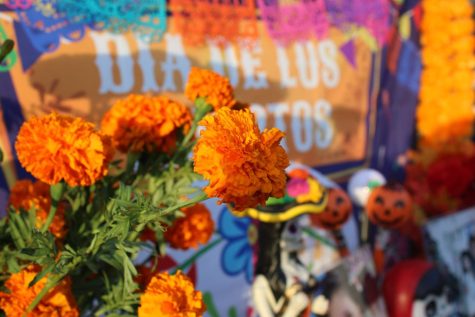
The aroma of flowers follows Maria Guadalupe Olea, who has been selling cempasúchil flowers for 15 years in the Pilsen neighborhood, in front of Panaderia Nuevo Leon on 18th Street. This year, she started selling them on Oct. 25 and will continue until Nov. 2. Thanks to the publicity that social networks have given her, Olea has sold many flowers in the last two years.
One day, while she was working, an employee of Panaderia Nuevo Leon asked Olea if she would like to go viral on the internet.
Since then, Olea said she has done well in sales.
She said this increase is due, in large part to the popularization of the Day of the Dead thanks to the Pixar movie, “Coco.”
“People of all races started coming to my stand to buy marigolds,” Olea said. “They wanted to try to continue the tradition because they really liked the way the film presented how we celebrate Día de Los Muertos with our families. That opened the door for a lot of sales.”
Others would order just a few boxes of flowers to sell, and now, Olea said she orders more than 65 boxes.
Unlike other years, her sister, Mirna Romero, was not present to sell the flowers with her, as she passed away a few months ago.
“I feel lonely,” Olea said. “I feel like a part of my heart is gone. I was so used to her being around me. We were always together.”
Olea said she plans to continue selling cempasúchil flowers at her same stand in Pilsen, but it will never be the same without the company of her sister.
“She was the best mom, sister, friend,” Olea said.


